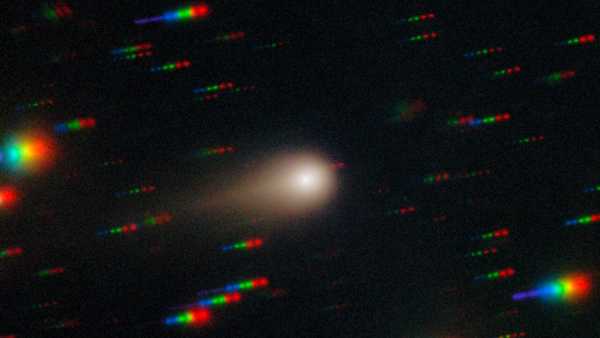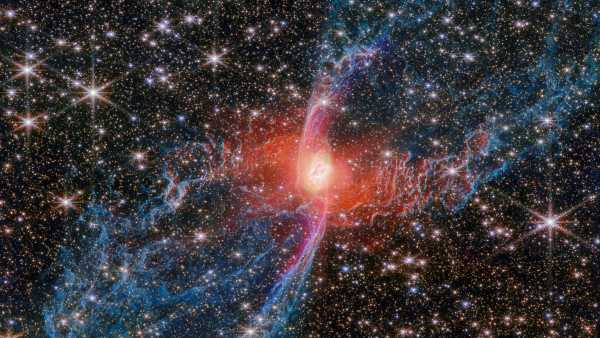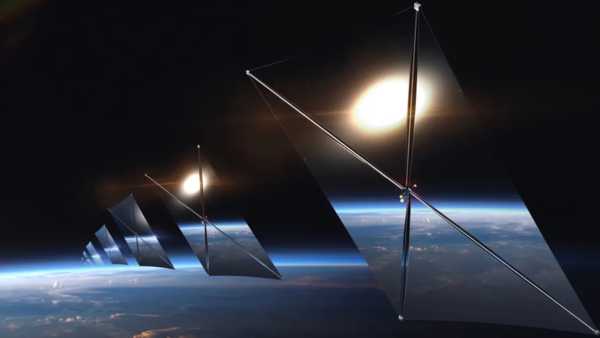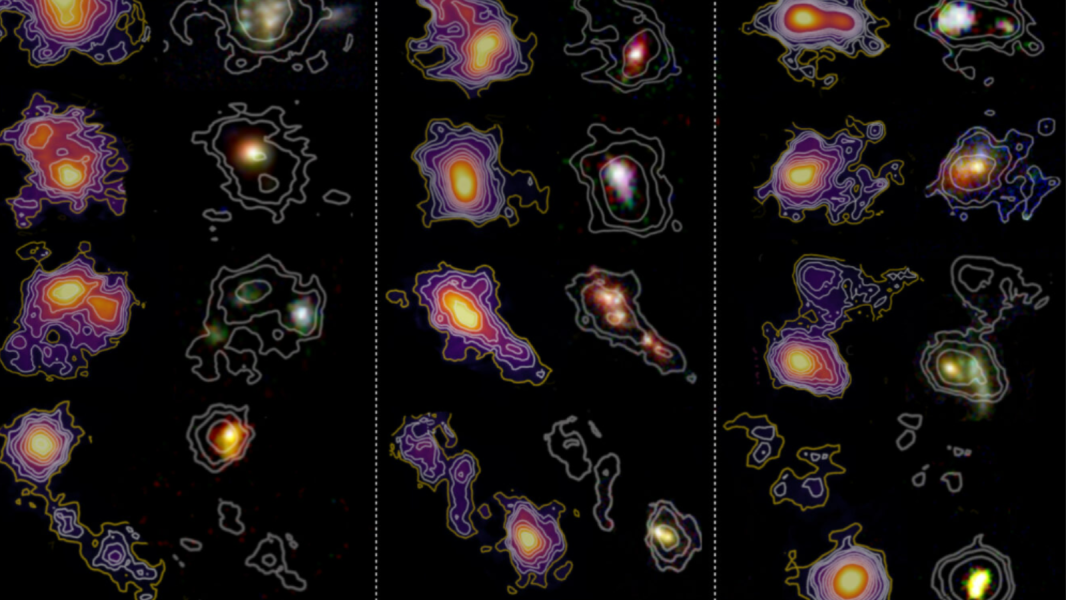
A family portrait of galaxies from the CRISTAL survey. Red indicates cool gas from ALMA [CII]. Blue and green represent starlight from the Hubble and James Webb Space Telescopes (Image credit: ALMA (ESO/NAOJ/NRAO) / HST / JWST / R. Herrera-Camus)
Astronomers have turned the Atacama Large Millimeter/submillimeter Array (ALMA) into a time machine, allowing them to peer into the cosmic era, 1 billion years after the Big Bang.
This has led to the discovery of previously hidden structures inside the Universe's first galaxies, which may help us understand how the modern cosmos, including our Milky Way galaxy, formed.
The data were collected as part of the CRISTAL ([CII] Resolved ISM in STar-forming galaxies with ALMA) survey, which imaged 39 typical star-forming galaxies that existed in the early universe, 13.8 billion years ago. ALMA used infrared data from the James Webb Space Telescope (JWST) and the Hubble Space Telescope. The target galaxies were chosen to represent the bulk of the galaxy population shortly after the Big Bang.
You may like
-
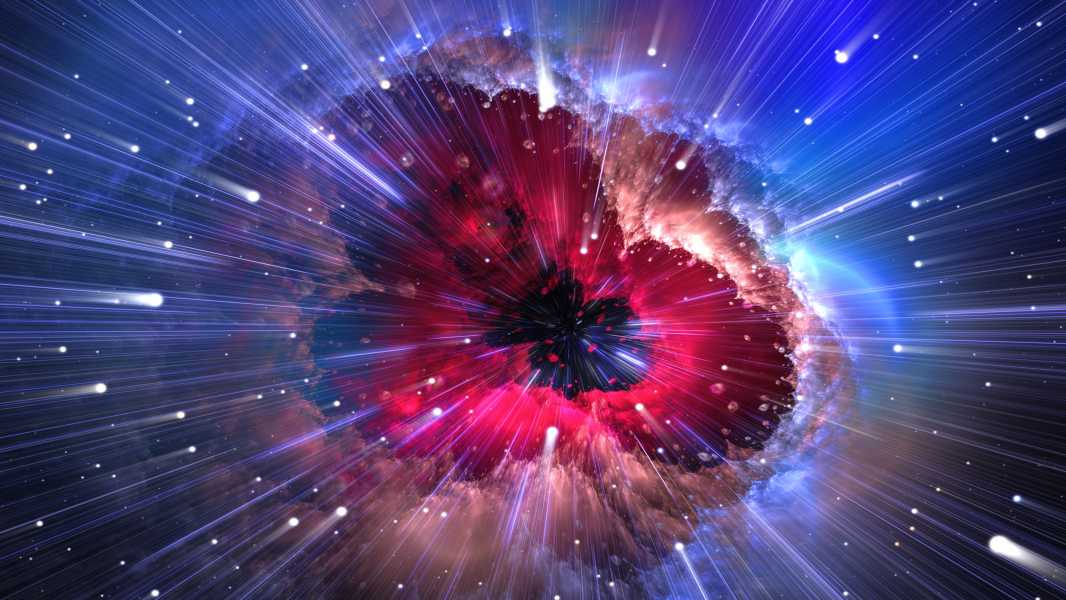
'People thought it was impossible': Scientists observe 'cosmic dawn' light for the first time in history using a telescope on Earth.
-
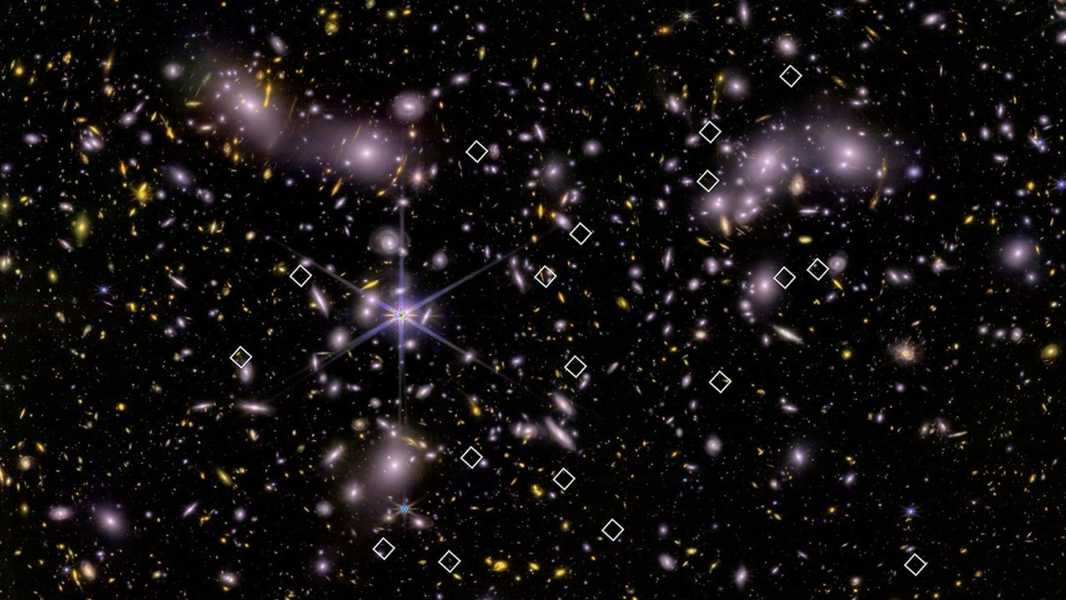
James Webb Telescope Discovers Tiny Galaxies That Could Have Changed the Universe
Sourse: www.livescience.com


